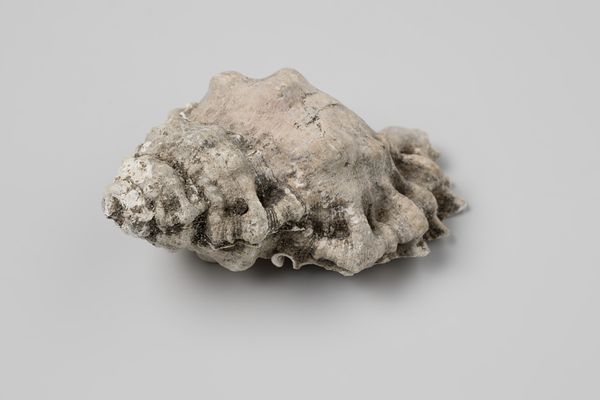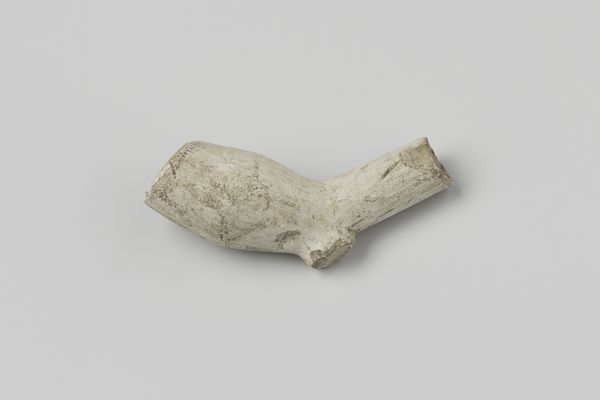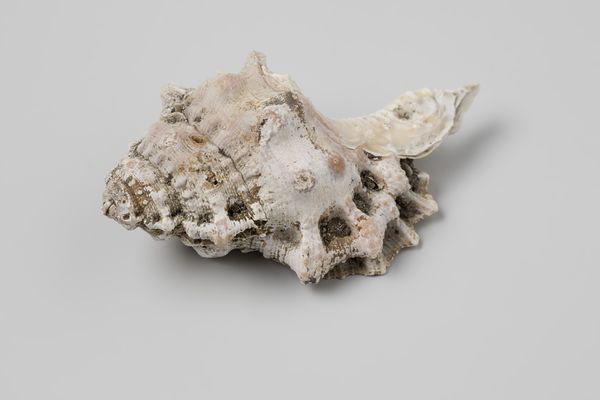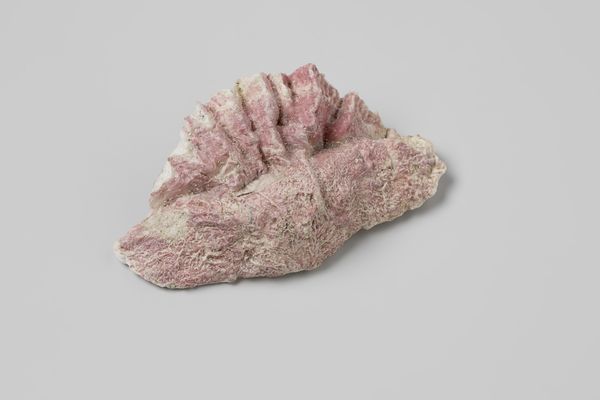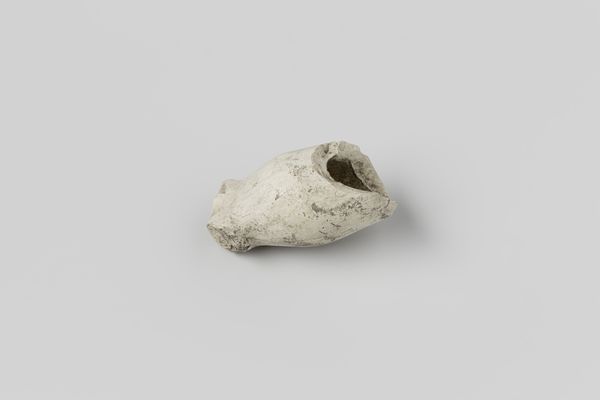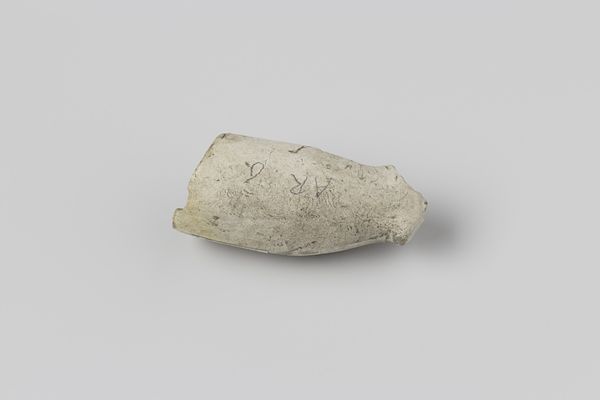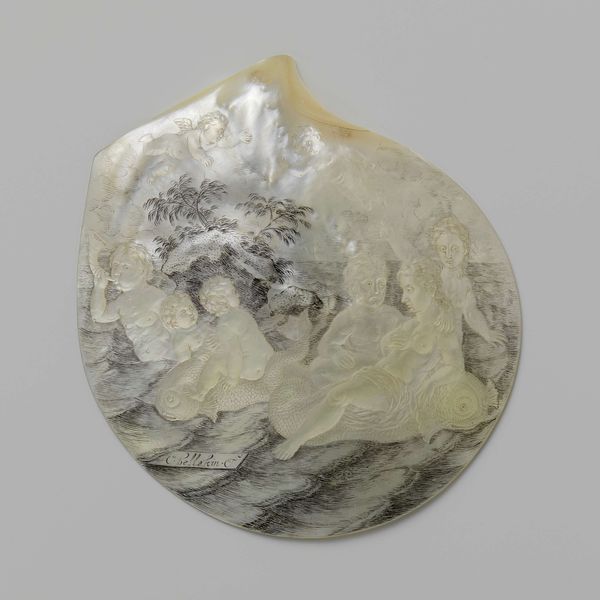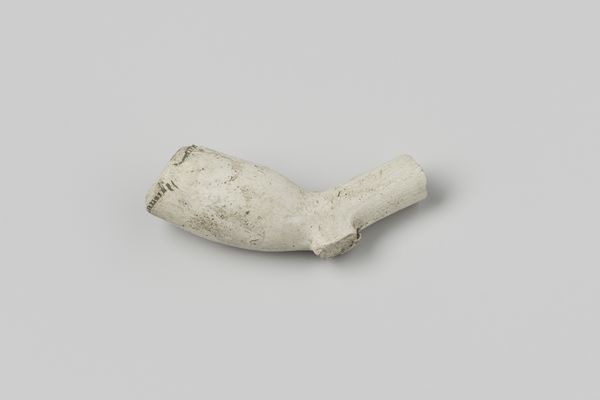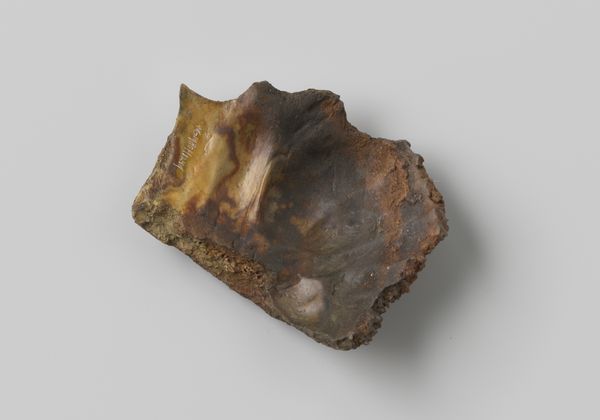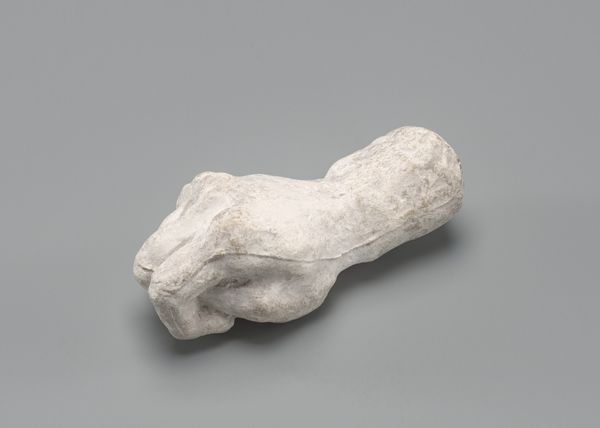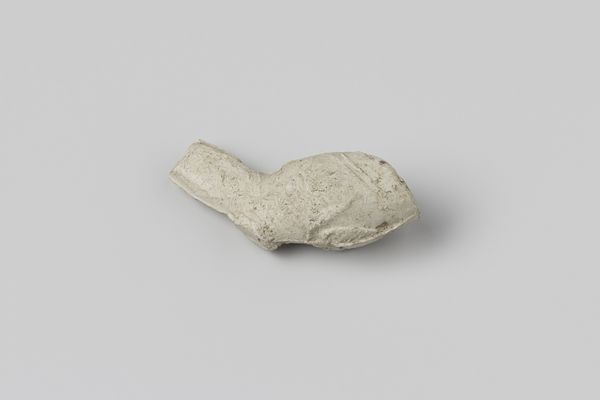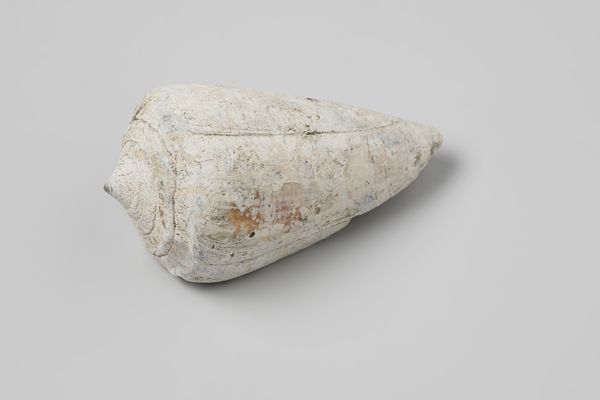
Shell, possibly a Bursa rubeta, from the wreck of the Dutch East India ship Witte Leeuw before 1613
0:00
0:00
found-object, sculpture
#
found-object
#
sculpture
#
ceramic
#
naturalism
#
nature closeup
Dimensions: length 5.0 cm, width 3.6 cm, depth 2.9 cm
Copyright: Rijks Museum: Open Domain
Editor: We’re looking at a shell, thought to possibly be a Bursa rubeta, recovered from the wreck of the Witte Leeuw. It dates from before 1613 and now resides at the Rijksmuseum. The texture is surprisingly complex. It is interesting that a found object is being classified as a sculpture. What do you make of the shape and form? Curator: The power of this piece resides in its materiality. We're presented with a natural object elevated to the status of art. Examine the spiral form; note the way the ridges articulate a sense of growth and dynamism frozen in time. Consider how the texture and pattern give us a tangible sense of the shell's history. Its whiteness is broken by small dark inclusions. What effect do these inclusions have? Editor: They add a sense of age, a feeling of weathering, almost like brushstrokes, actually. Curator: Precisely. These subtle details, along with the pronounced ridges, establish a clear contrast between smooth, flowing lines and jagged edges. The shell also demands a consideration of negative space. The openings and shadows are essential parts of the sculpture. It prompts one to contemplate natural form. How does this object transcend mere representation and evoke a deeper resonance? Editor: Thinking about it only in terms of its lines, shape and space reveals a lot more complexity than initially met the eye! Curator: Agreed. The focus on pure form brings us closer to the sublime inherent in the natural world.
Comments
No comments
Be the first to comment and join the conversation on the ultimate creative platform.
